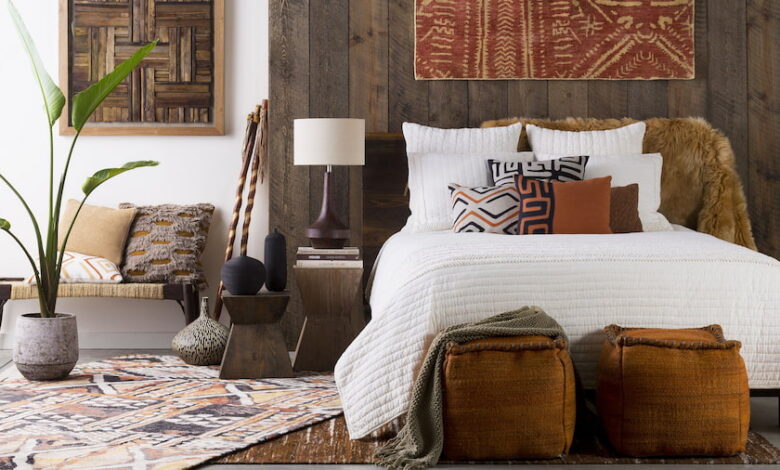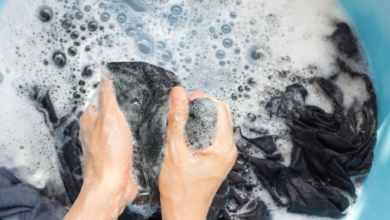The Role of Textiles in Interior Design

A person must choose the right interior design style if they would like to achieve the optimum balance between beauty & utility in their home. Nevertheless, there is no doubt about the significant impact that fabric has on how interior design is presented. T & A Textiles Manchester is a renowned textile company known for its high-quality fabrics and innovative designs in the heart of the textile industry. Because of the usage of textiles, everything from bedsheets to pillows to carpets along with towels now has a chic appeal. The idea of interior design without textiles is absurd.
Terminology for Interior Textiles:
Interior textile is another term for home furnishings cloth. The interior decoration of houses, offices, hospitals, hotels, schools, and various other locations regularly features these distinctive fabrics. Satin, brocade, corduroy, damask, heavy velvet, calico, canvas, terry, and taffeta are a few of the materials which are regularly utilised. Textiles are currently in greater need in the field of interior design. As a result, it offers incredible opportunities for textile manufacturers, merchants, and retailers.
Textile and Interior Design Technology
It is simple to figure out why the textile sector is making waves in the interior design industry. Since it can create cutting-edge materials and designs, textile technology is changing how we think about interior design. From smart textiles to sustainable textiles, this business is always evolving and pushing the boundaries of what is practical.
The development of textile technology is having a huge influence on interior design, allowing designers and architects to develop unique and practical voids that are both accessible and beautiful. As we look at new methods to include electronics into our lives, it is clear that the textile industry is going to have a big impact on how interior design evolves.
Using Cutting-Edge Textile Technology in Sustainable Home Design:
Modern textile innovations are making it possible to create sustainable interiors. Traditionally, organic materials like cotton, silk, and wool have been utilised for bringing nature into homes, but in recent years, scientists have created textile fibres which may be generated from discarded plastic bottles, cornflour, or seaweed.
Since they consume fewer resources than traditional fabrics, these materials are an environmentally beneficial alternative. Furthermore, cutting-edge manufacturing methods like 3D knitting offer lower waste output since patterns are developed by machines rather than humans physically sewing and cutting pieces together.
Another exciting innovation is smart textiles that integrate technology into fabrics to enable them to interact with their environment. To provide cooling throughout the summer and insulation during the winter, thermo-regulating textile technology, for instance, detects body temperature and modifies indoor temperatures to a suitable range. In general, these contemporary techniques not only help to create beautiful homes but also promote good health and leave a less carbon footprint on the environment.
The Development of Textile Technology In Design For Interiors
Since the earliest beginnings of spinning and weaving, textile technology has substantially improved. In the past, fabrics were limited to those made from natural fibres like cotton, wool, and silk. Nevertheless, the creation of synthetic fibres and cutting-edge production techniques has given rise to a wide range of novel products and techniques in the area of textile technology.
One important development in textile technology is the use of digital printing. This enables the direct printing of intricate patterns and designs into fabric, providing unique, customizable interior design alternatives. Another advancement is the use of smart textiles, which incorporate indicators or additional electronic components into the fabric itself.
The focus on sustainability in textile technology has started to increase in tandem with these advances in technology. Many companies have started using recycled materials or creating new eco-friendly fibres to reduce their environmental impact.
In general, the advancement of textile technology has opened up new possibilities for interior design. Utilising the wide range of resources and techniques accessible, manufacturers can create highly imaginative, environmentally responsible spaces which are both attractive and functional.
The Benefits of Textile Advances in Interior Design:
The benefits of textile innovation Textile technology is quickly embrace by the interior design industry as a game-changer. By utilising contemporary fabrics and materials, designers may create magnificent, practical sources that can be both helpful and aesthetically pleasing. One of the key benefits of textile breakthroughs for interior design is their versatility.

There are countless alternatives, from self-cleaning furniture to sound-absorbing drapes. Textile technology may also help in reducing trash and its adverse impact on the environment by using recycled materials or creating biodegradable products. By embracing this new era of creativity, designers may create distinctive and unique places which satisfy the demands of their customers and contribute to the creation of a better future.
Examining the Potential of Textile Technology in Interior Design:
Digital printing and smart fabrics are expect to significantly impact by upcoming innovations in interior design. Although creative textiles use sensors, LEDs, and conductive fibres for designs that are interactive, digital printing enables detailed designs. Sustainable textile innovations, such as recycled materials and eco-friendly production techniques, are also growing increasingly significant as customers’ environmental concerns grow. By incorporating these technologies, designers can produce avant-garde settings which enhance the global community.
Conclusion:
Interior design, which largely involves highlighting the aesthetic and design of a particular space, is well illustrate through textiles. Textiles are the only method to bring classic and contemporary aesthetics together in one space.
Also, read this: Transform Your Home with Creative Lighting





